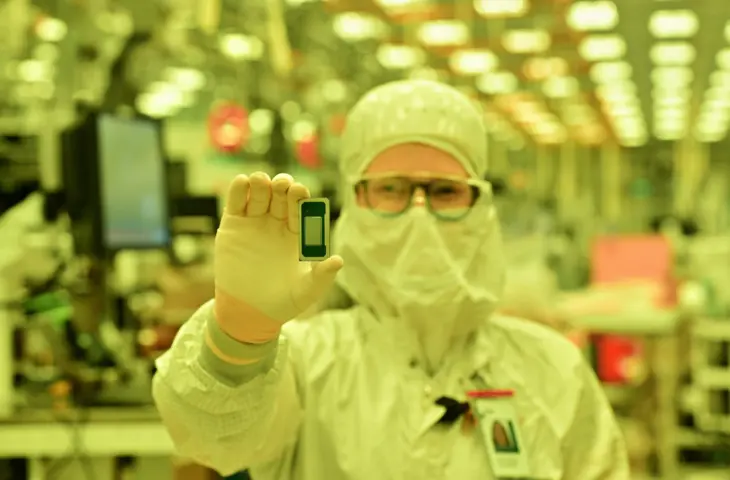Intel shares its future plans and reveals what’s on the roadmap for both Core Ultra 3 and Xeon 6+. Both chips will be partially manufactured on the new Intel 18A node.
Intel shows what it has in store for PCs and servers. Both the next generation server chips and the upcoming lineup of PC components will be partially manufactured on the Intel 18A production line.
What’s with those Nanometers?
Intel 18A will be Intel’s first production process in the 2nm class and can be seen as the equivalent of TSMC N2. Intel wants to be interesting and doesn’t speak of nanometers, but of ångström (A). 18 ångström is 1.8 nanometers.
Why nanometers are important, we described in more detail in this piece several years ago. In summary: the nanometers loosely refer to the resolution with which components are built on the chip. The smaller those components, the smaller the transistors; and the smaller the transistors, the lower the voltages, power consumption, and heat generation.
read also
What You Need to Know about Processors and Nanometers
This means you can pack more transistors on the same surface area, or give the same number of transistors a higher clock speed without hitting thermal limits. Even simpler: smaller components directly result in faster and more efficient chips.
Intel 18a
For Intel 18A, Intel expects 15% higher performance per watt and 30% higher density compared to Intel 3 due to the node shrink. The smaller structures required a rework of the transistors. FinFET disappears and is replaced by RibbonFET. It’s the first time in more than ten years that Intel has adjusted its transistor design.
The power delivery within the chip itself also changes. Intel embraces PowerVIA: a system where power is delivered from the back side.
Intel uses the announcement to appease President Trump, by repeatedly mentioning that Intel 18A will be developed and manufactured in the US. The US ‘bought’ a ten percent stake in Intel as a suddenly mandatory compensation for what was initially given as subsidies.

For its future chips, Intel has learned from AMD. The monolithic design disappears and makes way for a modular chiplet-based architecture. This has the additional advantage that Intel doesn’t need to roll the entire chip off the 18A line, only certain chiplets.
Panther Lake
For PCs, Intel is working on Core Ultra 3, codenamed Panther Lake. Panther Lake should combine the efficiency of Lunar Lake and the performance of Arrow Lake, according to Intel. The chips will be available with up to sixteen cores, which should perform up to 50% better than the previous generation.

The CPU cores are combined with a new graphics component. Intel chooses its own Arc GPU architecture for this. This should also perform 50% better than predecessors. There’s no mention yet of the collaboration with Nvidia for these chips.
The NPU would also become more efficient, although there’s no major performance leap. Computing power increases minimally from 48 TOPS to 50 TOPS. In any case, the built-in NPU is powerful enough to handle small tasks like subtitling and background blur, but nowhere near performant enough to run large AI models. Functionally, little changes on the AI front.
Intel again chooses a classic memory architecture, in contrast to the on-die RAM in Lunar Lake. Panther Lake will support 128 GB DDR5 or 96 GB LPDDR5.
Panther Lake goes into volume production this year. Intel hopes to ship the first components in 2025, but broad availability will be in early 2026.
Clearwater Forest
The future Xeon 6+ server chips will also roll off the 18A line. Xeon 6+ will succeed Xeon 6, which was launched earlier this year. For these chips, Intel expects instructions per cycle to increase by 7%. Components will be available with up to 288 cores, although in that case these are single-threaded E-cores aimed at cloud native workloads. That’s a doubling compared to Xeon 6.

Intel also speaks of significant steps forward in terms of density and efficiency, but shares no figures. Intel Xeon 6+ should be launched in the first half of 2026.
Return to First Class
By the end of this year, we should discover what concrete Core Ultra 3 lineup Intel wants to bring to market. Intel plans to work with three basic configurations: one with eight cores (4P +4E) and four Xe cores for the GPU, one with sixteen cores (4P, 8E and 4 ‘low power’ E) and the same GPU, and a third configuration with sixteen cores but a more powerful GPU.
If Intel can stick to the timing, it promises to compete in the first class again regarding chip production. Its own production capabilities will then no longer lag behind those of TSMC on a technical level.
Availability remains an important question. Official launches and claims about mass production don’t always translate to full shelves with servers and laptops of the latest generation. To what extent Intel 18A, Panther Lake and Clearwater Forest will be ubiquitous, we’ll only know in 2026.
